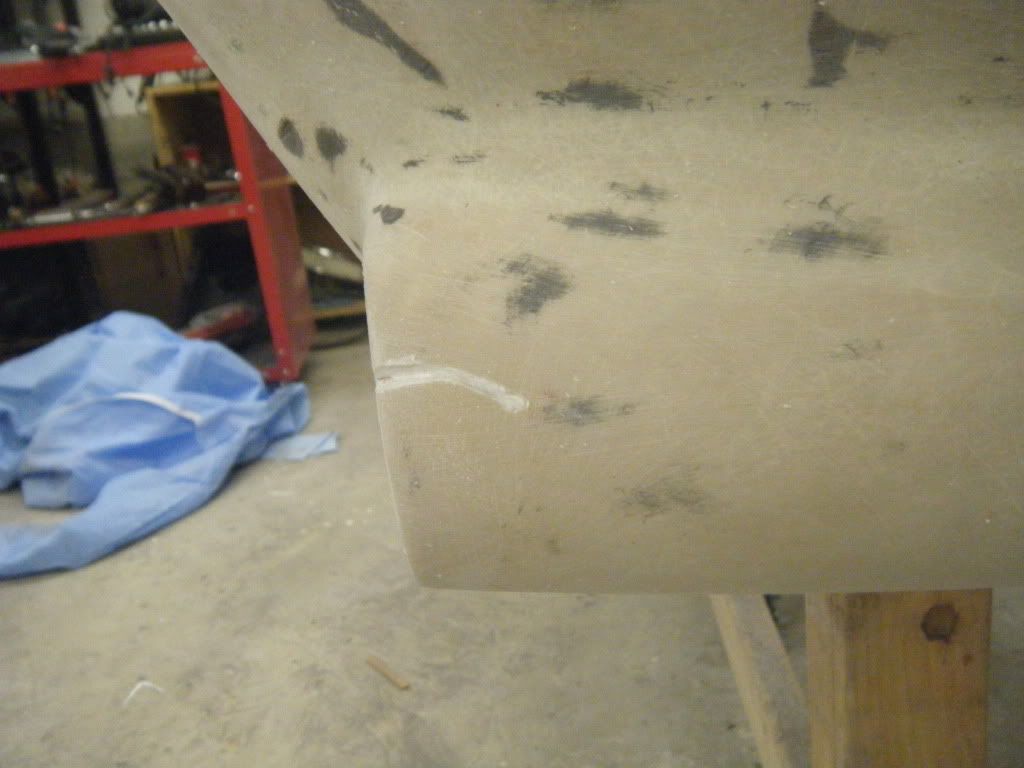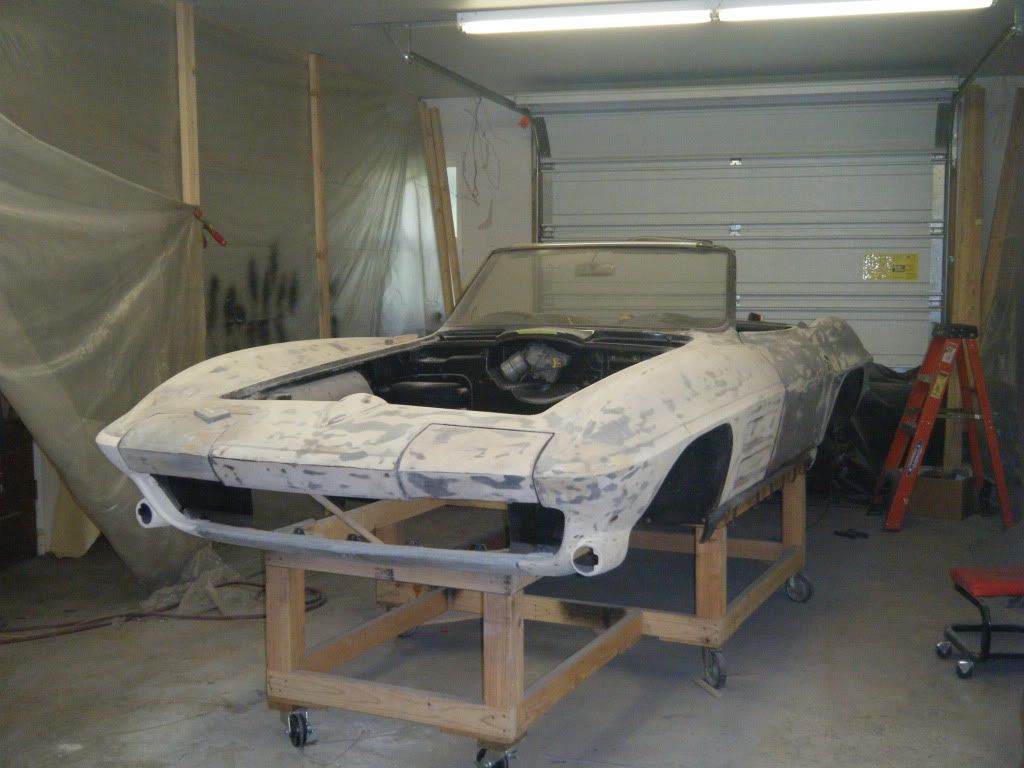Bob Heine
Oldtimer
Older Corvettes bodies were made from many panels that were glued together. The factory used bonding strips behind each one of the panel joints. The glue was also the filler for these panel joints. The glue expanded and contracted at a slightly different rate than the surrounding fiberglass (the double thickness of panel and bonding strip didn't help). The paint on the glue would telegraph the difference and you would see stripes at all the joints. The stripe is typically about an inch wide and the only way to avoid the stripes is to grind out the glue at the joint, feather the edges to about three inches and use fiberglass and resin to fill in the depression. Some experts use polyester resin and others use epoxy resin. Once the repair is sanded down, the whole area is given several coats of SPI epoxy primer. Shine recommends epoxy resin, epoxy filler and epoxy primer (only) to eliminate the problem. It isn't the only way but based on the Corvettes he has completed, it works.dukess396;11064 said:I'm curious, tell us more! What do these seems look like, how are they treated? Are procedures pretty standard, regardless of year? My boss just had his '66 Vette done by a local shop. It was a budget/favor deal. About a month after getting it back, little bubbles started appearing on the left fender. I remember there was some spotting there from brake fluid before it was sent to the shop. There looks like sags on the deck lid, all kinds of little junk.
Here's what the back half of a 1972 body looks like before it gets glued together.





